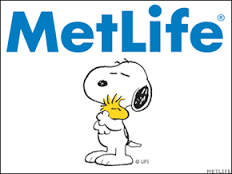Should MetLife be designated “too big to fail”?
Here is one summary of the latest:
The nation’s biggest life insurance company isn’t “too big to fail” after all — at least in the eyes of a federal judge, said Renae Merle in The Washington Post. In a “significant setback” for the Obama administration’s financial reform efforts, MetLife last week won a landmark lawsuit over its designation as a “systemically important financial institution.” Prior to the 2008 crash, large, non-bank financial firms were subject to little oversight, but after the near collapse of insurance giant AIG, federal regulators decided tougher rules were necessary. So the government labeled MetLife, which has 100 million customers worldwide, and three other non-banks — AIG, Prudential, and General Electric’s financing arm — as too big to fail, requiring them to set aside bigger financial cushions to ward off collapse. But MetLife challenged the label in court, and to the surprise of many, it won.
That’s four non-banks, identified in discretionary fashion by the regulators without a cost-benefit analysis or fully objective standards for such a designation. Not three, not five, rather four. And with exactly what standards of regulatory appeal? A thirty day appeal process? Once you are on that list, I believe it is politically very difficult for the Financial Stability Oversight Council to take you off. The regulators are not required to spell out any clear “exit strategy” for leaving the list.
Is this such a good idea? You don’t have to favor “doing nothing” to think this idea of a “tag, you’re it” game might be counterproductive. I am reminded of the wise words of Paul Krugman that a lot of crises can come from surprise corners and bring higher contagion costs than you might have expected. And the whole point of systemic risk and mispriced asset classes is that such problems can affect the entire market, or an entire sector of the market, all at once. Big firms or not. (It is weird for regulators to simultaneously believe that breaking up big institutions would increase market risk, and then focus their monitoring on…the biggest institutions.) What about money market funds, while we are on the topic? It’s not about the size of the biggest one.
That all suggests it is better to build safeguards into the system at a general level, rather than playing the tag game. Those safeguards can include corporate governance reform, better Fed monitoring of credit markets, better stress tests, better overall money market infrastructure and crisis procedures, and better monetary policy in downturns, among other ideas.
If you impose higher capital requirements on four relatively well-observed firms, you might just be pushing risk into other and less well-observed corners of the financial system.
On Twitter, Austan Goolsbee is very upset about this ruling. Jack Lew has been described as “furious.”
I say it’s a blessing in disguise. Any regulatory system whose success relies on singling out four firms is a system bound to fail.
Addendum: Here is a relevant article by Cass Sunstein.
